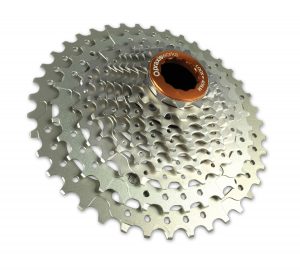“Ride Changing” Road & Gravel Bike Technology
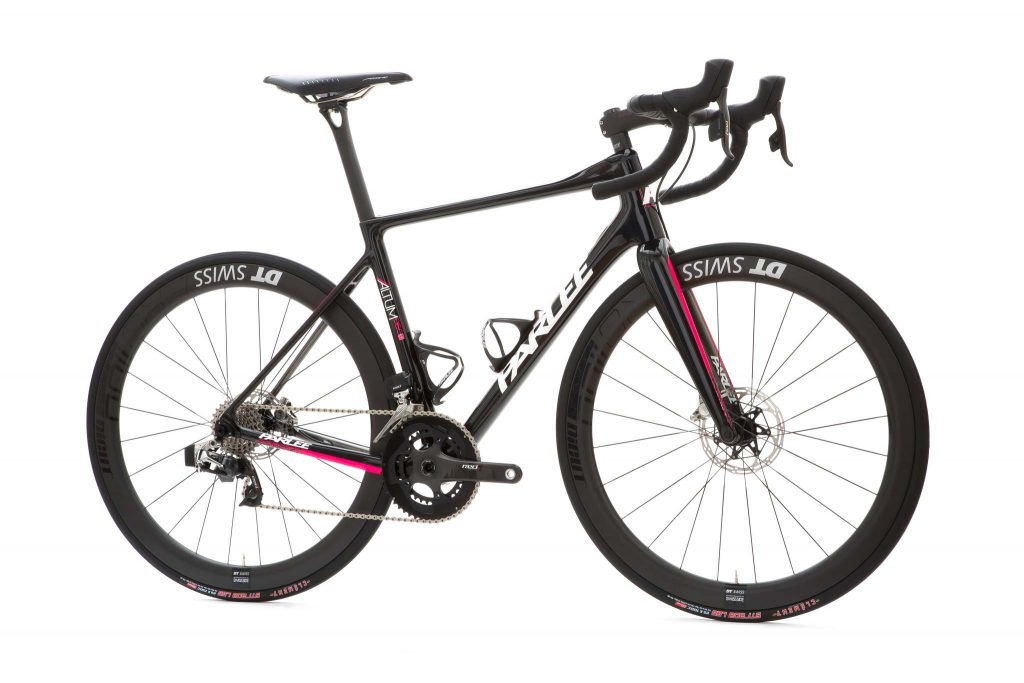 Since the invention of the “safety bicycle” in 1885, there have been few times in history that have seen the types of monumental advances in road bike technology as we have seen in the past few years. The changes might not be quite as monumental as the advent of steering, gears and pneumatic tires in the late 1800’s, but they are as significant as the development of the clipless pedal in the 1970’s and the advent of the integrated brake/shift lever in 1990 – both innovations that changed riding a bike forever. What are some of the biggest advancements that have made such a pronounced difference in how road bikes work and perform in recent years?
Since the invention of the “safety bicycle” in 1885, there have been few times in history that have seen the types of monumental advances in road bike technology as we have seen in the past few years. The changes might not be quite as monumental as the advent of steering, gears and pneumatic tires in the late 1800’s, but they are as significant as the development of the clipless pedal in the 1970’s and the advent of the integrated brake/shift lever in 1990 – both innovations that changed riding a bike forever. What are some of the biggest advancements that have made such a pronounced difference in how road bikes work and perform in recent years?
Ultra Broad Road Bike Gearing Options:
While there have been compromised “workarounds” for years, the past few years have seen great strides from Shimano and SRAM in terms of gearing options from the factory. “Compact” 50/34 chainrings, providing lower and easier to climb gears than the traditional 53/39, are now the standard on most road bikes. In addition, SRAM deserves much credit for making longer cage road derailleurs that allow lower gearing ranges in the back of the bike (down to a low of 32, or even 36, teeth) readily available. Compared to the 39T small front chainring with a 25T rear cog that was the most popular low gear on many road bikes not that long ago, a 34 tooth chainring in concert with a 32 tooth (or lower) rear cog is like adding an engine while climbing for many riders! From K-Edge derailleur cage extenders to ultra-wide range cassettes and J-Tek Shiftmate conversion pulleys that allow mountain bike derailleurs to work with road shifters, Fit Werx has significant experience in the best ways to get the lowest gearing possible.
The net effect of all these new gearing options is that road bikes are easier than ever to ride – making climbs, distance and spinning a higher cadence much more obtainable for many riders.
More and More Road Bike Disc Brakes:
While most performance oriented wheeled vehicles switched to disc brakes years ago (including mountain bikes), the road oriented bike took longer to adopt. While cable actuated disc brakes 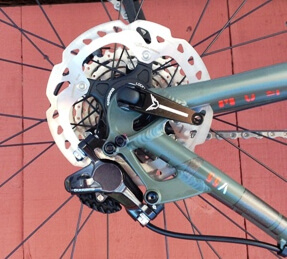 have been available on some cyclocross style bikes for awhile, the first hydraulic disc brake system (like what is found on a motorcycle or higher end mountain bike) didn’t show up until 2013 when SRAM introduced their Hydro line! Since then, Shimano has jumped in as well and now there are hydraulic brake options available across a range of component levels, including those with electronic shifting.
have been available on some cyclocross style bikes for awhile, the first hydraulic disc brake system (like what is found on a motorcycle or higher end mountain bike) didn’t show up until 2013 when SRAM introduced their Hydro line! Since then, Shimano has jumped in as well and now there are hydraulic brake options available across a range of component levels, including those with electronic shifting.
Why would you want hydraulic disc brakes on a road bike? While disc brakes are heavier than caliper brakes, they do offer performance and convenience benefits over traditional caliper brakes.
- A quality disc brake system will be stronger, more progressive and modulate better than a caliper brake. It takes less hand power to actuate and control a hydraulic disc brake and the braking performance is not diminished by weather and environmental factors to the degree found in a caliper system. Rain or shine, pavement or dirt, disc brakes work consistently.
- Disc brakes open up design options so that a frame can be built to accommodate a wide range of tire sizes with little compromise. Some disc brake road bikes, like the Parlee Chebacco, can accommodate everything from your standard traditional 700×23 tire up through a wide 40mm+ tire! This is great if you want one bike that rides great on pavement or dirt and looser/rougher surfaces.
- Wheels can start to become lighter in the best places for performance. Without the need for a braking track, disc brake wheels can be built with lighter rims – the portion of wheel weight that most affects acceleration.
So, while disc road brakes may not universally be for everyone, they can help provide confidence while opening up new roads for many riders.
Reliable and Refined Electronic Shifting is Here to Stay:
While the first electronic shift systems came out in the early 1990’s, they were buggy and the designs were discontinued after a season or two. However, this all changed when Shimano introduced their electronic Di2 system in 2009. With the introduction of Shimano Di2, Shimano took electronic shifting mainstream when they introduced a system that truly progressed the way bicycles 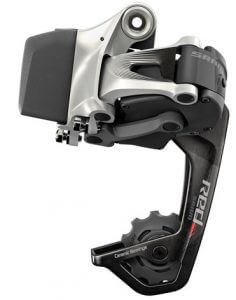 shift. In addition to Shimano, Campagnolo’s EPS system offers electronic shifting and SRAM introduced their wireless SRAM eTap electronic system in the spring of 2016.
shift. In addition to Shimano, Campagnolo’s EPS system offers electronic shifting and SRAM introduced their wireless SRAM eTap electronic system in the spring of 2016.
While electronic shifting may sound gimmicky, it is not. The benefits and opportunities become clear quickly for many riders once they start to use the technology. Some of these benefits include the ability to shift the front derailleur at almost any time, even while climbing; shifting more often and thus maintaining a higher cadence; and even single lever shifting (the system decides whether a front or rear shift is needed and chooses accordingly). From a comfort perspective, we’ve had more than a few people with smaller hands or stiff/arthritic joints find electronic shifting easier on the wrist and arm as the long throw required of a mechanical shift lever is consumed by the simple push of a finger on an electronic button. In a word, it is really “easy”.
Another benefit of electronic components is how their development has benefited traditional mechanical shift systems. Once the quality of shifting in the electronic systems was realized, it set a high benchmark for the shift quality and ease of use of components in general. All three major component groups have made significant improvements to their shifting (especially in the front derailleur) of their mechanical groups in the past few years as they have redesigned derailleurs, cranks and chainrings based on the requirements for electronic shifting.
On an interesting note, with few exceptions, we have noted that electronic shift systems also require less maintenance. The cables are some of the most problematic parts of many bikes. By eliminating the cables, and the associated friction, electronic bikes not only work better, but the derailleurs require little to no adjustment after initial set-up. The batteries provide great life (600-1000+ miles between charges) and, as an added benefit, many of the latest electronic systems are actually lighter than their mechanical counterparts.
Wide Rims/Tires & Tubeless Technology Improve the Ride:
A few years ago, in pursuit of aerodynamics, HED Cycling started experimenting with wider rim profiles. While they found some aero benefits to the wider designs (primarily in terms of stability 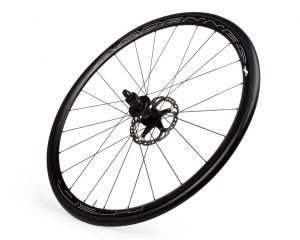 under yaw angle) an unintended benefit was found with the wider internal rim dimensions. Wider rims effectively create more surface contact between the tire and the road by “tricking” us to ride a wider tire than we think. More consistent surface contact leads to lower rolling resistance, better traction and a smoother ride – win, win, win.
under yaw angle) an unintended benefit was found with the wider internal rim dimensions. Wider rims effectively create more surface contact between the tire and the road by “tricking” us to ride a wider tire than we think. More consistent surface contact leads to lower rolling resistance, better traction and a smoother ride – win, win, win.
Almost all clincher rims are now a good 3mm wider than they were a few years ago (some are 5-6mm wider!). When you install a tire on a wider rim, it gets flatter and wider. With the de facto tire width for pavement now being 25mm instead of 23mm, a modern tire/rim combination has a good 5-8mm more tire width contacting the ride than just a few years ago. From boosting stability and rider confidence to absorbing bumps, this is a big step forward in ride quality and performance for many riders and bikes.
Our first article on tubeless road tires was written about nine years ago. We were adapting standard clincher wheels to tubeless at that time to take advantage of the smooth ride and flat resistant technology that they offer. This was not perfect as few clincher rims were designed specifically for tubeless tires at the time and this required additional maintenance. There were also few road tubeless tire options in 2009 and the technology had not reached its potential yet in terms of rolling resistance or weight. It is now almost 2018 and things have changed. Carbon or aluminum, the majority of wheels for 2018 are designed to work specifically with tubeless tires and recent tubeless tire options, like the Schwalbe Pro One, offer some of the best rolling resistance number of any tire. Mavic’s new road UST rim and tire system are even making tubeless easy to install and clean. Years later, tubeless road has come of age and is now showing its full promise.
Conclusions:
Innovations like wide range gearing, disc brakes, electronic shifting. tubeless tires and wider rims/tires have significantly enhanced the experience of riding a road bike for many riders. It is a great time to be considering a new bike; even bikes from just a few years ago do not have most of these innovations. Be sure to get a Rider First Fitting in advance of buying a bike so that you can find that perfectly matched bike for your body. Your bike should be selected and set-up to accommodate your needs, not the other way around. Combine the right fit with the right technology and you will find riding to be more enjoyable than ever. We can guarantee it.
Contact us to learn more or to help find a great new bike that fits your body and use as well as possible!

